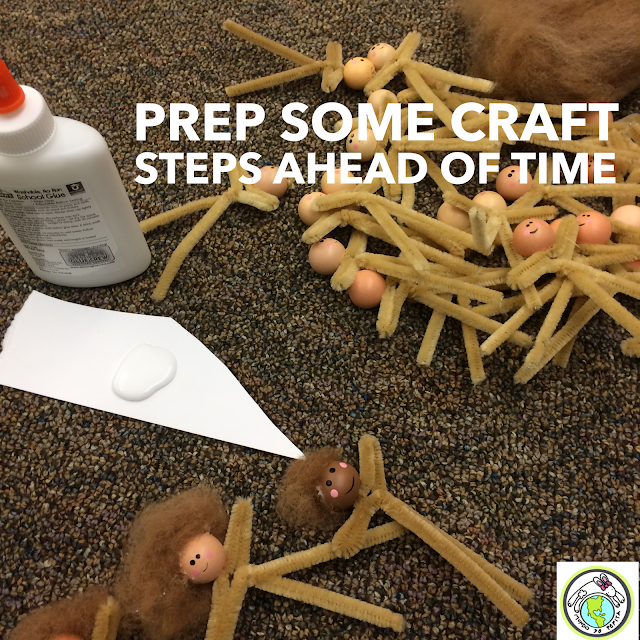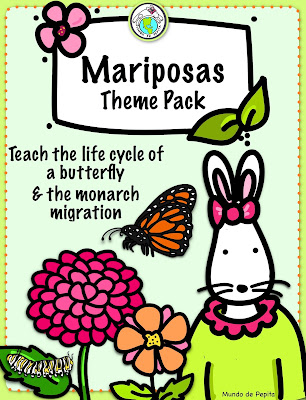I ADMIT IT, I LOVE A GOOD CRAFT PROJECT IN CLASS, and over the years I have done all kinds... but, also, I will admit that at one point, they were not always so language rich. The kids had fun, made something cute or culturally connected, and my artistic, creative kiddos in particular had an outlet in Spanish class. But, too much time was spent on creating, cutting, or pasting and not enough target language was woven into the project to make it justifiable linguistically... sound familiar?
HERE'S THE GOOD NEWS! This doesn't mean you have to ditch craft projects altogether- although some may need to go if they don't meet the grade- I have dumped many through the years, or altered them to include more language use. Following are some tips that work for me to provide more language input and output during craft projects while still providing a hands on experience:
*MULTISTEP CRAFT PROJECTS are a great way to provide language input as you and the whole class do the project step by step. With little kiddos, giving instructions for each step, waiting until everyone has finished that step, then moving on to the next, provides lots of support and helps kids who have a hard time with multi step instructions- and keeps the activity all in the target language with listening comprehension. A cultural project that lends itself really well to this category is tissue paper flowers- s
ee our post on how to make them here!
*KEEP CRAFT SMALL: There is no rule that says a craft or illustrating project has to be large, especially when a smaller one will do. Consider shrinking the size of drawings, collages, weavings, etc so they don't take as long to complete. This shortens the crafting time while still providing an opportunity for students to engage in these fun activities.
*HAVE STUDENTS SELECT MATERIALS: Reinforce manners and making requests vocabulary in the target language by giving students the chance to choose some of the materials they will use for the project such as the color of paper or yarn, etc.
*CIRCULATE AROUND THE ROOM WHILE STUDENTS ARE CRAFTING: If your students are doing a craft independently, such as a Huichol yarn painting or making a paper arpillera, circulate around and ask kids about their work as they are engaged in the activity. Questions like 'What color is ___?' and 'What size is ____?' or 'Do you like the color ____?', and so on provide language usage while kids are crafting and connects language to their project.
*PREP STEPS AHEAD OF TIME: Some crafts involve a fair amount of steps, or steps that are harder for little hands to do, so if, as a teacher, I still want to do them, I prep some of those steps ahead of time so my students don't have to do them. For example, I make the first fold of tissue paper when we are making paper flowers, and I attach their name tags to the stems prior to class. Having these two steps already done before class also makes finishing the flowers in one 30 minute period less hectic, and means the steps we do do in class can be done in the target language.
*PARTNER WITH ART OR GEN ED TEACHERS: There are some crafts that are just too involved to do in class and still get enough language exposure to make it worth it.. and that's where teaming up with another teacher is a fantastic way to ensure your students have an opportunity to do a meaningful cultural craft without you losing valuable class time.
THE CRAFT PROJECTS THAT I STILL DO IN MY CLASSES are all cultural ones at this point, such as making tissue paper flowers, paper arpilleras and 3-D figures, paper shoes for Three King's Day and so on. Every project goes through a litmus test- how can I incorporate more language into the activity? If there is still too much "down time" where they are crafting but not using Spanish then I either modify the activity or ditch it. I don't want to get rid of crafts altogether because, especially at the elementary school, they are some of the most memorable things we do (or, at least that's what the kids tell me!) and... sometimes you've just gotta make a paper & yarn llama! :)
Happy crafting!










